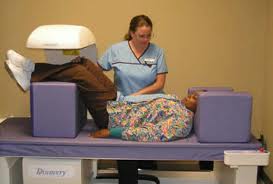 As this blog predicted, both politics and religion have entered the women's health arena and it may result in a reduction in hard-fought-for services and advances for women. Recently, the US Dept. of Health and Human Services modified the final ruling that requires new health insurance plans to cover contraceptive services without a copay or deductible by August 2012. A temporary compromise, giving non-profit employers who, based on religious beliefs, do not want to include contraception access within their plans, an additional year to adapt to the new ruling. While churches are exempt, hospitals and other large social services that may have religious affiliations will be expected to offer contraception in their plans by 2013 and they are not happy about it. Religious leaders are rallying against the new ruling and women who need contraception are feeling outraged.
As this blog predicted, both politics and religion have entered the women's health arena and it may result in a reduction in hard-fought-for services and advances for women. Recently, the US Dept. of Health and Human Services modified the final ruling that requires new health insurance plans to cover contraceptive services without a copay or deductible by August 2012. A temporary compromise, giving non-profit employers who, based on religious beliefs, do not want to include contraception access within their plans, an additional year to adapt to the new ruling. While churches are exempt, hospitals and other large social services that may have religious affiliations will be expected to offer contraception in their plans by 2013 and they are not happy about it. Religious leaders are rallying against the new ruling and women who need contraception are feeling outraged.
Since many of our readers are outside the U.S. and have universal access to contraception, let me explain. Many women in the United States use contraception, especially the 'pill', even though it is rarely covered by insurance requiring women to paying for it 'out of pocket'. The average cost per year is $600 which is a financial challenge for many younger women. In order to meet the needs of women with limited incomes, social service programs have been providing contraception through local public health departments and agencies like Planned Parenthood but their resources are limited. When viagra was released for men--and covered by most public and private insurance plans- it refueled the argument for insurance coverage for contraceptives. It should be noted that contraceptives not only prevent pregnancy, they are often used to regulate difficult menses, reduce the risk of ovarian cancer, treat fibroids, and reduce anemia due to heavy menstrual bleeding.
The role of churches, synagogues, and mosques is to provide a place to provide spiritual guidance to their members based on the teachings of their faith. According to the US Constitution, these institutions have the freedom to preach and practice their faith. Their members generally adopt those beliefs and practice them in their daily lives. These institutions are not free to impose their beliefs on others who do not espouse their teachings.
Hospitals and social service agencies are not houses of worship. Decades ago, most hospitals were run by religious orders. Today, hospitals (whether public, private or non-profit) are very large businesses that provides a valuable service and are paid for most of these services. They take in patients no matter what their religion. Hospitals also have to be competitive to attract the best employees by offering a comprehensive benefit package which includes a list of services that they may or may never use. Hospitals are subject to legal business practices because they are corporations (registered with the local state) and dependent on third party payers (insurance or public aid) to support their services. Because they accept third party payment in the form of insurance, they need to follow certain federal and state regulations. The days of the kinder and gentler Catholic hospital run by nuns is gone. Now, religious hospitals are merging into big, competitive conglomerates. As such, they are a business that just so happens to have a religious affiliation. They do not preach theology in waiting rooms. Staff members do not need to be a member of a certain house of worship to work there.
So here is a solution. Hospital and care agencies include contraception (as per law) in their compensation package to employees as well as other attractive options like smoking cessation to attract the best professionals possible. Female non-smokers who need contraception use the contraceptive benefit, but they do not use the smoking cessation benefit. A Catholic employee who smokes, who does not believe in contraception, chooses to use the smoking cessation benefit but not the pill. If a mega hospital run by a religiously run corporation wants the best employees, they better focus on good business practices and leave the spiritual guidance to their affiliated houses of worship. It's all about choice, a woman who firmly believes contraception is wrong, can simply say no.
P.S. Word on the street is that government leaders are split on this issue with women more in favor of better access to contraception. The National Women's Law Center is requesting help with a petition that you can sign on by clicking HERE.

 Researchers at UCLA's Jonsson Comprehensive Cancer Center found that the quality of life (QOL) in younger breast cancer patients is seriously compromised and these women often suffer from severe psychological distress, infertility, premature menopause, a decrease in physical activity and weight gain. The
Researchers at UCLA's Jonsson Comprehensive Cancer Center found that the quality of life (QOL) in younger breast cancer patients is seriously compromised and these women often suffer from severe psychological distress, infertility, premature menopause, a decrease in physical activity and weight gain. The  Having diabetes may cause women to experience a greater degree of hearing loss as they age, especially if the metabolic disorder is not well controlled with medication, according to a new study from Henry Ford Hospital in Detroit. Women between the ages of 60 and 75 with well-controlled diabetes had better hearing than women with poorly controlled diabetes, with similar hearing levels to those of non-diabetic women of the same age.The study also shows significantly worse hearing in all women younger than 60 with diabetes, even if it is well controlled.
Having diabetes may cause women to experience a greater degree of hearing loss as they age, especially if the metabolic disorder is not well controlled with medication, according to a new study from Henry Ford Hospital in Detroit. Women between the ages of 60 and 75 with well-controlled diabetes had better hearing than women with poorly controlled diabetes, with similar hearing levels to those of non-diabetic women of the same age.The study also shows significantly worse hearing in all women younger than 60 with diabetes, even if it is well controlled. Studies have shown that language development varies between the sexes, with males generally gaining language skills at a slower rate. Prenatal testosterone is known to influence fetal neurodevelopment, and preliminary studies have suggested that the hormone is associated with language delay. Researchers from the U of Western Australia explored this issue in a large cohort of children. They collected umbilical cord blood samples from 861 randomly selected births and measures the bioavailable testosterone levels. As expected the males had a much higher level of testosterone in the umbilical cord blood than the females. For the following three years the parents completed an Infant Monitoring Questionnaire annually that measured communication (language), gross-motor, fine-motor, adaptive and social development.
Studies have shown that language development varies between the sexes, with males generally gaining language skills at a slower rate. Prenatal testosterone is known to influence fetal neurodevelopment, and preliminary studies have suggested that the hormone is associated with language delay. Researchers from the U of Western Australia explored this issue in a large cohort of children. They collected umbilical cord blood samples from 861 randomly selected births and measures the bioavailable testosterone levels. As expected the males had a much higher level of testosterone in the umbilical cord blood than the females. For the following three years the parents completed an Infant Monitoring Questionnaire annually that measured communication (language), gross-motor, fine-motor, adaptive and social development. You’ve heard it before, but it’s a cliché that has earned its place: breast cancer knows no boundaries. It affects all women – of all ethnicities, young or old, blue collar and professional. Cancer doesn’t care where you worship, who you love, or how you vote. Over 30 years ago I served for 13 years as the first executive director of a Chicago based breast cancer support organization called Y-ME. Today, the Y-ME National Breast Cancer Organization is the largest breast cancer support organization in the U.S.
You’ve heard it before, but it’s a cliché that has earned its place: breast cancer knows no boundaries. It affects all women – of all ethnicities, young or old, blue collar and professional. Cancer doesn’t care where you worship, who you love, or how you vote. Over 30 years ago I served for 13 years as the first executive director of a Chicago based breast cancer support organization called Y-ME. Today, the Y-ME National Breast Cancer Organization is the largest breast cancer support organization in the U.S. Pfizer Inc. announced today that it has voluntarily recalled 14 lots of Lo/Ovral®-28 (norgestrel and ethinyl estradiol)Tablets and 14 lots of Norgestrel and Ethinyl Estradiol Tablets (generic) for customers in the U.S. market. An investigation by Pfizer found that some blister packs may contain an inexact count of inert or active ingredient tablets and that the tablets may be out of sequence. The cause was identified and corrected immediately.
Pfizer Inc. announced today that it has voluntarily recalled 14 lots of Lo/Ovral®-28 (norgestrel and ethinyl estradiol)Tablets and 14 lots of Norgestrel and Ethinyl Estradiol Tablets (generic) for customers in the U.S. market. An investigation by Pfizer found that some blister packs may contain an inexact count of inert or active ingredient tablets and that the tablets may be out of sequence. The cause was identified and corrected immediately. Experts recommend that older women have regular bone density tests to screen for osteoporosis. But it's been unclear how often to repeat the tests. A study of nearly 5,000 women now reports that patients with healthy bone density on their first test might safely wait 15 years before getting rescreened.
Experts recommend that older women have regular bone density tests to screen for osteoporosis. But it's been unclear how often to repeat the tests. A study of nearly 5,000 women now reports that patients with healthy bone density on their first test might safely wait 15 years before getting rescreened. Teens who start smoking could smoke more over their lifetimes– which may be made shorter as a result. It’s a good reason to quit.
Teens who start smoking could smoke more over their lifetimes– which may be made shorter as a result. It’s a good reason to quit. Drinking red wine in moderation may reduce one of the risk factors for breast cancer, providing a natural weapon to combat a major cause of death among U.S. women, new research from Cedars-Sinai Medical Center shows. The study, published online in the Journal of Women’s Health, challenges the widely-held belief that all types of alcohol consumption heighten the risk of developing breast cancer. Doctors long have determined that alcohol increases the body’s estrogen levels, fostering the growth of cancer cells.
Drinking red wine in moderation may reduce one of the risk factors for breast cancer, providing a natural weapon to combat a major cause of death among U.S. women, new research from Cedars-Sinai Medical Center shows. The study, published online in the Journal of Women’s Health, challenges the widely-held belief that all types of alcohol consumption heighten the risk of developing breast cancer. Doctors long have determined that alcohol increases the body’s estrogen levels, fostering the growth of cancer cells. Northwestern University and the University of Chicago have launched the Chicago Collaboration for Women in Science, Technology, Engineering, and Mathematics, a three-year effort to enhance the recruitment and advancement of women faculty members in those fields.
Northwestern University and the University of Chicago have launched the Chicago Collaboration for Women in Science, Technology, Engineering, and Mathematics, a three-year effort to enhance the recruitment and advancement of women faculty members in those fields.